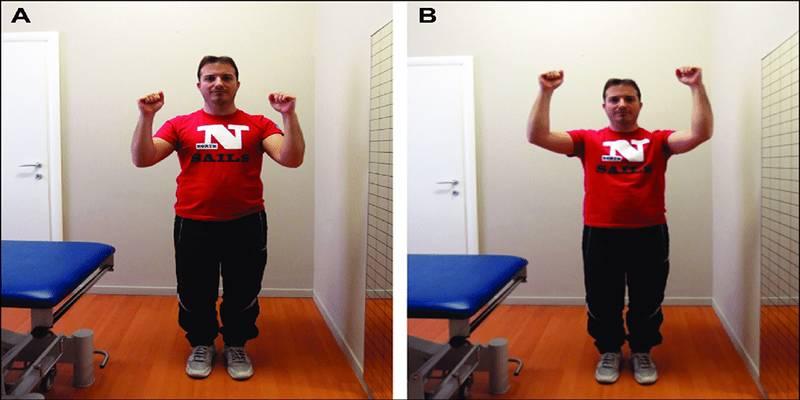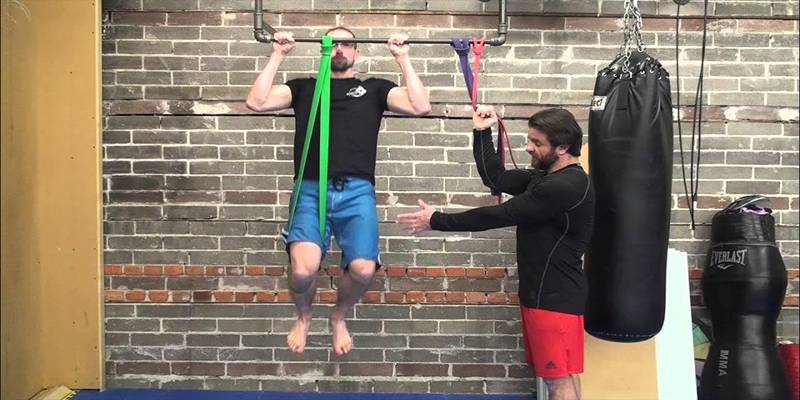Introduction
Scaption is an important part of growing shoulder strength, making the body more stable, and making the upper body work better overall. It is done by lifting the arms in a certain way within the scapular plane, focusing on the muscles around the shoulder blade.
It is often used in physical treatment and exercise routines to help people improve their balance, avoid accidents, and get better from shoulder problems. This post talks about scaption, what it is, how it works, and why having strong scapulae is essential for everyday life and sports.
What Is Scaption?
Scaption is the controlled movement of raising your arms at an angle of approximately 30 to 45 degrees forward from the side of your body. This motion, performed in the scapular plane, aligns naturally with the shoulder joint's mechanics, making it safer and more effective than traditional lateral or front raises. The term "scaption" combines "scapula" (shoulder blade) and "elevation" (upward motion), highlighting the involvement of the shoulder blade in the exercise.
The deltoid, trapezius, and rotator cuff are the scapular muscles that work during the exercise. By strengthening these muscles, scaption improves shoulder stability and functionality, reducing the likelihood of injuries.
The Role of the Scapula in Shoulder Movement
The scapula, commonly known as the shoulder blade, is essential in arm and shoulder movements. Located on the back of the upper rib cage, it is the foundation for many muscles that control motion in the arms and upper body. The scapula ensures smooth and coordinated movement during activities such as lifting, throwing, or pushing.
Scaption helps activate and strengthen the scapular muscles, allowing the scapula to move fluidly while stabilizing the shoulder joint. This balance prevents undue stress on the joint and supports better overall mechanics, particularly during overhead or repetitive motions.
Why Is Scaption Important?
Scaption is essential because it builds the foundational strength and stability required for healthy shoulder function. Targeting the scapular muscles enhances coordination, prevents injuries, and supports proper posture. Unlike exercises focusing solely on the deltoids or biceps, scaption strengthens the muscles that keep the shoulder blade aligned and functional.
This exercise is also efficient, mimicking the natural movements used in daily activities. Whether lifting groceries, reaching overhead, or participating in sports, scaption ensures that your shoulders can handle these tasks safely and efficiently. Additionally, rehabilitation programs commonly prescribe scaption to aid recovery from injuries or surgeries.
How to Perform Scaption
Performing scaption correctly ensures you reap its benefits while avoiding strain or injury. Here's a step-by-step guide:
- Start Position: Stand with your feet shoulder-width apart. Hold light weights or resistance bands in your hands, keeping your arms relaxed by your sides.
- Raise Your Arms: Slowly lift your arms at a 30 to 45-degree angle from your body's side, stopping when they reach shoulder height.
- Control the Motion: Lower your arms back to the starting position with a smooth, controlled motion.
Tips for Proper Form:
- Keep your shoulders relaxed to avoid unnecessary tension.
- Do not lift your arms too high, as this can strain the shoulder joint.
- Start with light weights or no resistance to perfect your technique.
Scaption can be performed by anyone, from beginners to seasoned athletes, as long as proper form is maintained.
Benefits of Scapular Strength

Strengthening the scapular muscles offers many physical, functional, and rehabilitative benefits. These include:
Improved Posture
Strong scapular muscles play a vital role in aligning the shoulders and spine. This alignment prevents rounded shoulders or slouching, which can lead to chronic pain and discomfort. Good posture reduces neck and lower back strain, enhancing overall body mechanics.
Enhanced Shoulder Stability
Scapular strength supports the shoulder joint, reducing the risk of injuries. Whether you're performing repetitive motions, lifting heavy objects, or engaging in sports, a stable shoulder joint minimizes stress and prevents overuse injuries.
Increased Athletic Performance
Athletes benefit significantly from scapular strength, particularly those involved in throwing, swimming, or weightlifting. Scaption improves the coordination and efficiency of movements, enhancing power and endurance while reducing the likelihood of injury.
Functional Strength for Everyday Life
Scapular strength is essential for everyday tasks, from carrying groceries to reaching overhead cabinets. Scaption builds functional strength, making these activities more accessible and safer.
Rehabilitation and Recovery
Scaption is a critical component of rehabilitation programs for shoulder injuries or surgeries. It helps restore mobility, correct imbalances, and rebuild strength, making it an effective tool for long-term recovery.
Common Mistakes to Avoid
While scaption is a straightforward exercise, certain mistakes can limit its effectiveness or cause discomfort. Avoid these common pitfalls:
- Using Heavy Weights: Excessive weight can strain the shoulder joint and compromise form. Start with light weights or no resistance.
- Shrugging Shoulders: Keep your shoulders relaxed throughout the movement to target the correct muscles.
- Lifting Too High: Raising your arms above shoulder height can put unnecessary stress on the joint. Stop at shoulder level.
By focusing on controlled, deliberate movements, you can maximize the benefits of scaption while minimizing the risk of injury.
Scaption in Rehabilitation

Physical therapists often recommend scaption as part of rehabilitation programs for shoulder injuries. Its alignment with the scapular plane makes it a safe and effective exercise for recovering from rotator cuff injuries, frozen shoulder, or post-surgical weakness. Scaption helps restore strength and mobility while addressing muscle imbalances that may have contributed to the injury.
Integrating Scaption into Your Routine
Adding a scaption to your exercise routine is simple and effective. Aim to perform 2-3 sets of 10-15 repetitions, focusing on controlled movements. Combine scaption with other shoulder and back exercises, such as rows or face pulls, to create a well-rounded upper-body workout.
Consistency is crucialregular practice strengthens the scapular muscles, improves posture, and enhances shoulder stability. Scaption is a valuable addition to any routine, whether you are an athlete, recovering from an injury, or maintaining general fitness.
Conclusion
Scaption works the scapular muscles, stabilizes the shoulder, and improves posture. Injury prevention, rehabilitation, and daily functional strength are its advantages. Scaption is safe and effective for weightlifting, shoulder injuries, and posture improvement. Regular, effective scaption builds stronger, more durable shoulders and reduces injury risk. Scaption maintains shoulder health and upper body strength as part of an exercise or rehabilitation regimen.







